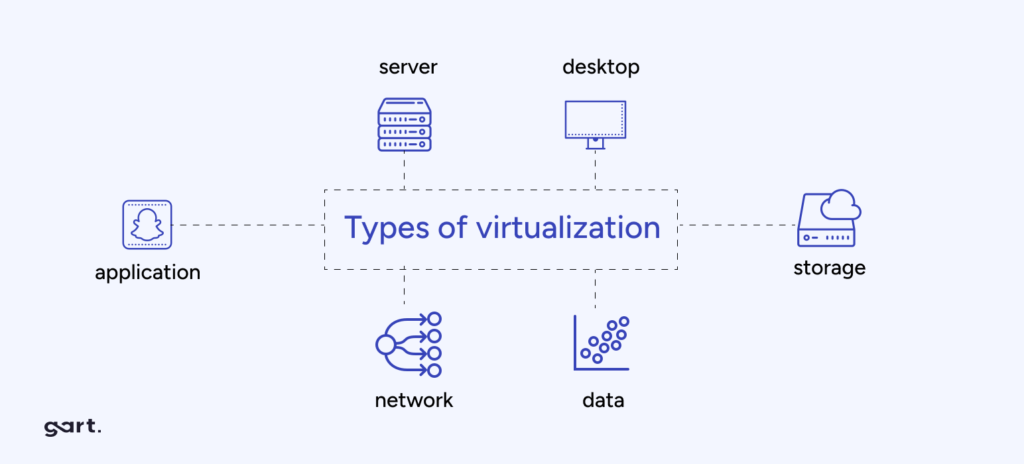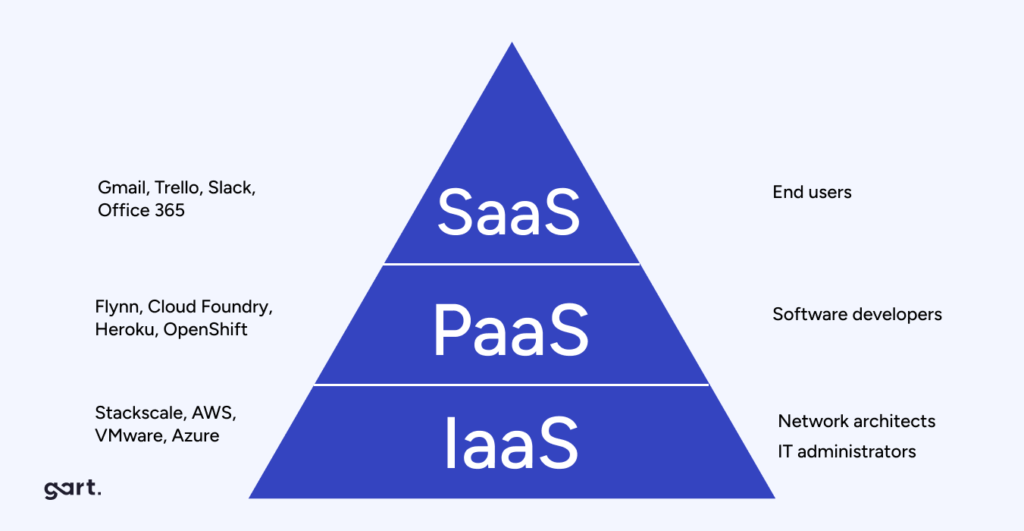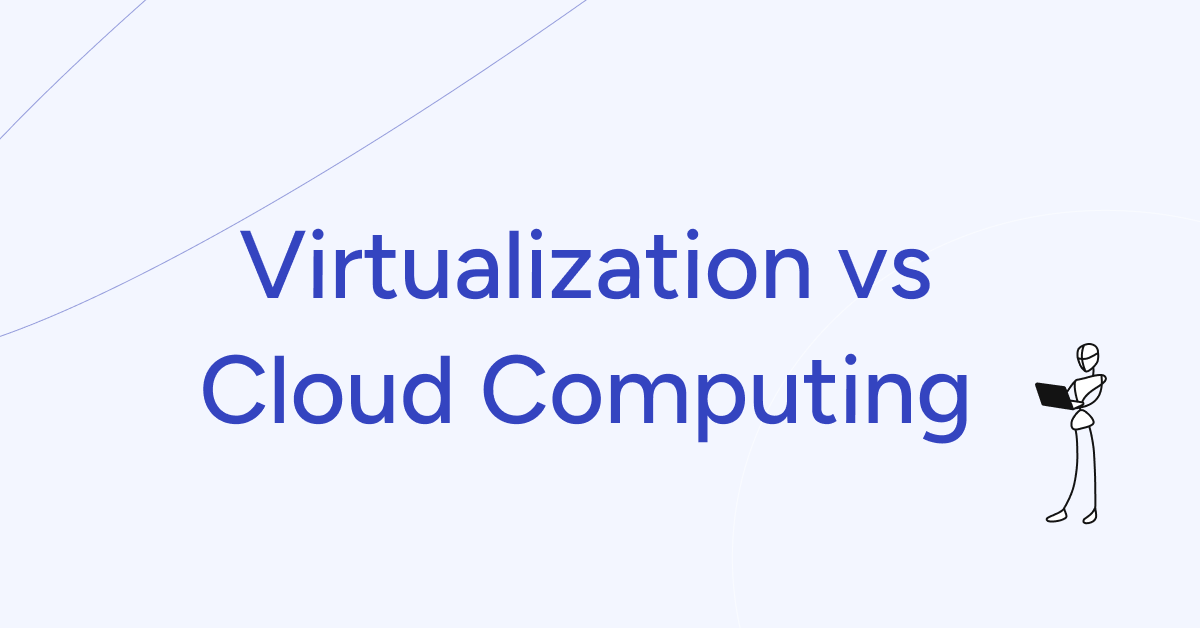The tech world can be confusing, especially with terms like virtualization vs cloud computing. Here’s the thing: virtualization is kind of like magic for computers. It lets you create multiple fully-functional computer setups (operating system, applications and all) on a single physical machine. Think of it like splitting your computer into different workspaces, each independent of the others.
Now, cloud computing takes things a step further. Imagine those virtual workspaces we just created? Cloud computing lets you move them around to different platforms and access them remotely, like through the internet. So, instead of being stuck on your specific computer, you can work on your virtual workspace from anywhere with an internet connection!
What is virtualization?
Imagine your computer is like a big apartment building. Traditionally, each program or function needed its own entire apartment (physical server). Virtualization is like inventing super-efficient mini-apartments (virtual environments) that share the building’s resources. This lets you run multiple programs on a single machine, saving space (money) and making things more flexible.
Originally, virtualization just split up servers, letting you cram more virtual servers onto one physical machine. Now, it’s like creating whole virtual office spaces! We can virtualize desktops, storage, networks, the whole IT kit and kaboodle.

The thing that manages all these mini-environments is called a hypervisor. Think of it like the super-efficient building manager, keeping everything running smoothly.
Virtualization platforms like Microsoft Hyper-V and VMWare vSphere are like fancy blueprints for building these virtual spaces. They don’t just create individual apartments, they design entire virtual data centers with all the bells and whistles!
There are many benefits to virtualization, but the coolest examples are probably virtual servers (VPS/VDS) and virtual desktops (VDI).
A VPS is basically a self-contained virtual server within a bigger machine. It’s like having your own studio apartment with all the essentials. Unlike physical servers, VPS are quick to set up, easy to move around, and can be deleted in a snap when you’re done with them.
VDI takes things a step further. Imagine everyone in your company using the same virtual desktop environment, no matter what kind of computer they have. Data is all stored securely on a central server, kind of like a company cloud storage, and employees access it from their devices. This lets one IT person manage thousands of desktops, even if everyone is working remotely from different locations!
What is cloud computing?
Imagine you need a computer to work on a project, but instead of buying a whole new machine, you rent computing power from a giant data center “in the cloud.” That’s cloud computing in a nutshell.
These data centers are filled with servers, storage, and other whiz-bang tech that you can access over the internet. It’s like a giant digital buffet where you can pick and choose exactly the resources you need, from processing power to software programs.
The cool thing is these “clouds” are made up of tons of smaller resources pooled together. So, if you only need a little bit of muscle for your project, you don’t have to pay for a whole server. It’s kind of like renting a single bike from a giant bike-sharing network instead of buying your own whole garage full of them.
This makes cloud computing super flexible and scalable. Need more power for a demanding task? No problem, just dial up your resources in the cloud. Need to cut back because the project’s winding down? Easy, just scale down your usage.

The Most Prominent Cloud Service Models
The three most widely used service types among users are IaaS, PaaS, and SaaS.

IaaS – Infrastructure as a Service
The provider separates the computing resources from the physical hardware – servers and storage – and provides them to their clients. Each client gets an isolated virtualized infrastructure, such as servers, storage, and virtual machines. The provider ensures the physical equipment is operational, while the client independently maintains the virtual infrastructure, configures it to their needs, and installs the required software. The advantage of IaaS is that organizations don’t need to purchase equipment – if the workload grows, the provider supplies additional resources, and if it decreases, there’s no need to pay for unused capacity.
PaaS – Platform as a Service
PaaS involves providing a broader range of services compared to IaaS. Under this model, clients receive a virtual infrastructure with pre-configured software for specific tasks. The provider handles the platform’s setup and configuration, and grants the client access to manage it. The advantage of PaaS is that the client gets a ready-to-use platform and doesn’t have to devote resources to its maintenance.
SaaS – Software as a Service
Software as a Service is a completely packaged solution for use. SaaS encompasses a vast array of software, from email services to CRM. The advantage of SaaS is that clients receive a service ready for use with defined, unchangeable settings. The provider handles licensing, timely software updates, and provides technical support.
These are the main cloud service types, but not the only ones. Other services include:
- Serverless computing
- Backup and disaster recovery
- Cloud storage
- Managed services, e.g. Managed Kubernetes
Why Deploy Services in the Cloud if Corporate Resources are Already Virtualized?
Virtualizing the corporate infrastructure is the first and most crucial step towards cloud computing. It helps an organization utilize IT resources more efficiently. However, migrating to the public cloud will allow you to go even further – deploy corporate applications without significant investments in equipment. The provider supplies the infrastructure and assumes the costs of maintaining it.
Thanks to its greater scale, the cloud is more elastic than a virtualized corporate infrastructure. Migration enables creating a hybrid cloud from a combination of local and multiple cloud environments. This allows organizations to select the best services from different providers and not depend on a single service provider.
Managing a hybrid infrastructure is no more complex than a typical one and can be done from a single location.
The Advantages of the Cloud Compared to Corporate Virtual Infrastructure
The most crucial, but not the only, advantage of the cloud is high availability. The cloud infrastructure is replicated at multiple levels, ensuring the services will be provided no matter what. A failure in a corporate data center can partially or completely paralyze an organization’s operations.
Speed of Deployment
The cloud allows rapidly deploying high-load services without worrying about potential lack of computing power. The cloud provider automatically allocates resources based on the current load.
Cost Savings
Migrating services to the cloud reduces the burden on an organization’s IT department, as the provider assumes the responsibility of maintaining the cloud infrastructure. Moreover, IT expenses become more predictable – you only pay for the resources you actually consume.
Elasticity
The cloud IT infrastructure scales based on the current business needs. As the load grows, the provider proportionally increases the allocated resources. Additionally, the cloud helps handle short-term peak loads seamlessly, as the scaling capabilities are practically limitless. And during periods of low activity, there’s no need to worry about idle capacity.
Security and Data Protection
The cloud has ready-made tools for backup, disaster recovery, and ensuring fault tolerance. Furthermore, the cloud is well-protected against DDoS attacks and hacker intrusions.
Virtualization vs Cloud Computing Table
| Feature | Virtualization | Cloud Computing |
| Technology | Creates virtual machines (VMs) on physical hardware | Delivers IT resources like servers, storage, and software over the internet |
| Location | VMs run on local hardware | Resources are located in remote data centers managed by cloud providers |
| Control | Users maintain control over VMs and underlying hardware | Users access resources on-demand with limited control over underlying infrastructure |
| Scalability | Can be scaled up or down by adding or removing physical hardware | Highly scalable – resources can be easily provisioned and released as needed |
| Cost | Requires upfront investment in hardware and virtualization software | Typically pay-as-you-go model based on resource usage |
| Management | Requires in-house IT expertise to manage VMs and hardware | Cloud provider handles infrastructure management and maintenance |
| Use Cases | Server consolidation, application isolation, disaster recovery | Remote work, web applications, data storage, big data analytics |
| Examples | Dedicated virtual servers (VPS/VDS), virtual desktops (VDI) | Infrastructure as a Service (IaaS), Platform as a Service (PaaS), Software as a Service (SaaS) |
Conclusion
Let Gart help you navigate your IT options. Contact our team today for a free consultation to discuss your specific needs and how we can tailor a virtualization or cloud solution to power your business.
See how we can help to overcome your challenges









